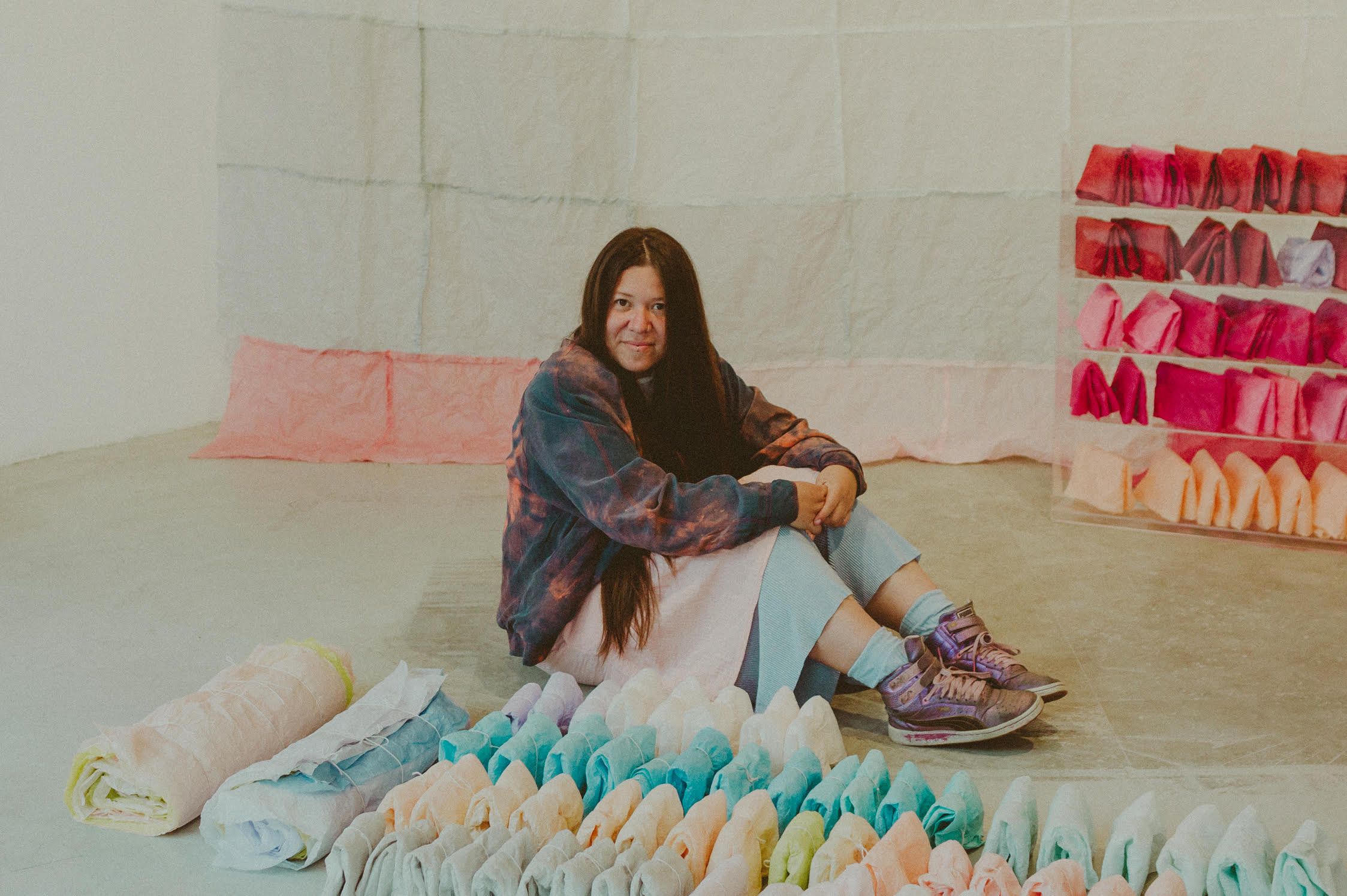Conversation with Natalia Villanueva Linares
Interview with the recipient of the February edition of MyMA Artist Grant, Natalia Villanueva Linares.
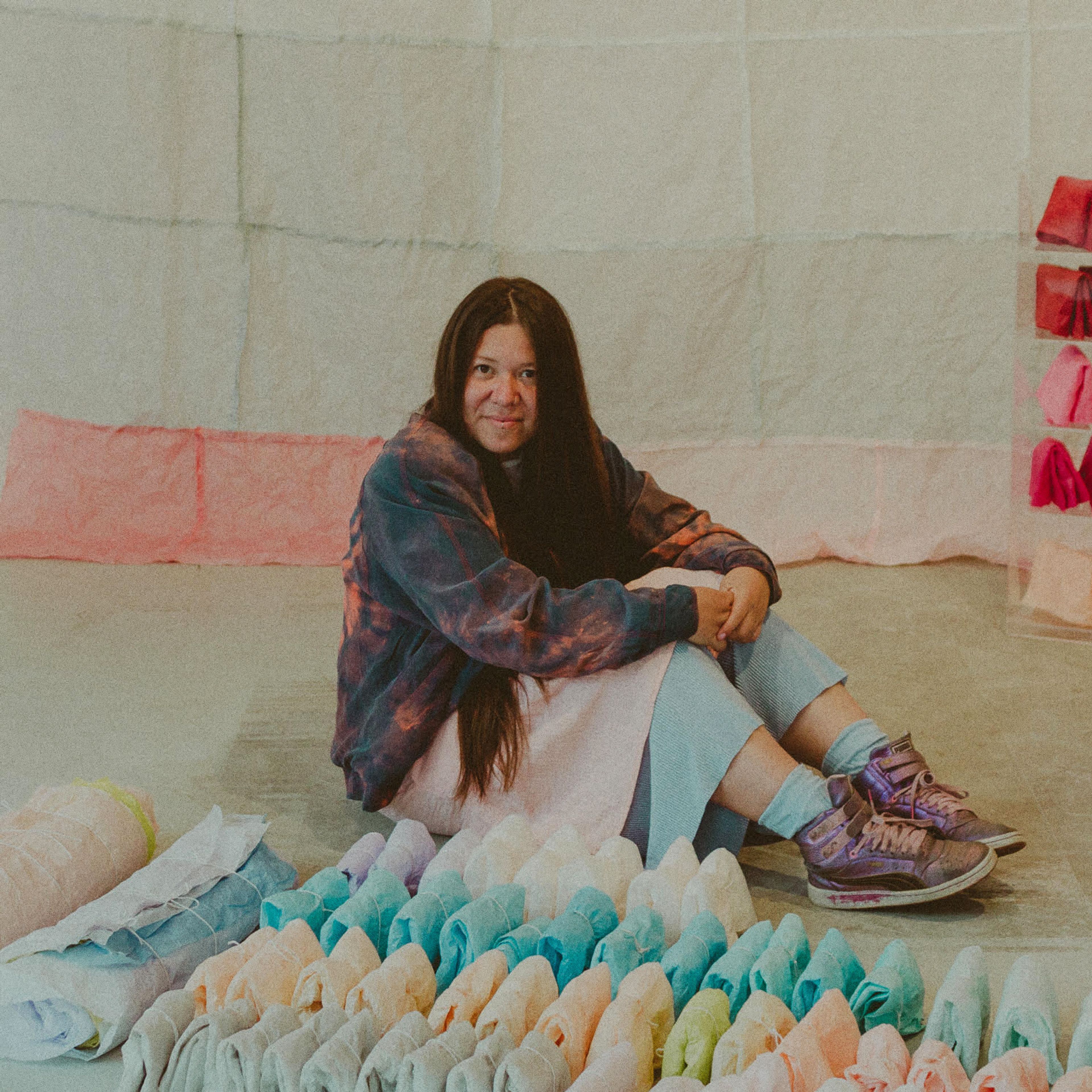
The Winner of the April Edition of the MyMA Grant is Natalia Villanuena Linares. Natalia is a French Peruvian Artist. She currently lives in Chicago and works between North + South America and Europe. Her work has been shown in two major exhibitions at the Palais des Beaux Arts in Paris. She also exhibited at the Sala Miro Quesada Garland in Peru, the Collège de Bernardins in Paris and La Graineterie (FR). In 2019 she had her first solo shows with DPM gallery in Ecuador, Wu Gallery in 2021 (Peru), her first solo show at the Museo de Arte de San Marcos in 2022 as well as Comfort Station in Chicago. She collaborates often with Doyang Lee Gallery (Paris). Natalia is also a cultural worker, she co-founded the non-profit organization Yaku in Peoria IL. She is the former Director of the Artist-run mini mansion High Place and founder of the magazine Ukayzine, created to promote international cultural exchanges through the visual Arts. Natalia contributes as a Translator for Sixty Inches From Center, with her series "Desde los Archivos'' and recently inaugurated the critic program CANJE in her studio Fortuna, an exploration in cultural criticism. We spoke to Natalia about art making, her recent residency, and secrets. Tune in below!
Congratulations on finishing your residency at Loghaven! Can you tell us more about your experience there and how it impacted your work?
It was really incredible! They have created a great system for artists to enjoy the space and feel protected. The space itself, which has won an architectural prize, is really beautiful and is surrounded by forest. The art studio felt as if it was floating over the forest, so you could hear the sound of the forest and branches when you worked. The forest entered my work.
I knew that nature affects my work, but I didn't know how it’s going to affect me this time. I was there to write secrets, and I had a structure built in my studio waiting to carry the hidden stories I was going to write in the residency. But then, several large branches kept finding me during my walks from the cabin to the studio and they became an instrument in my project.
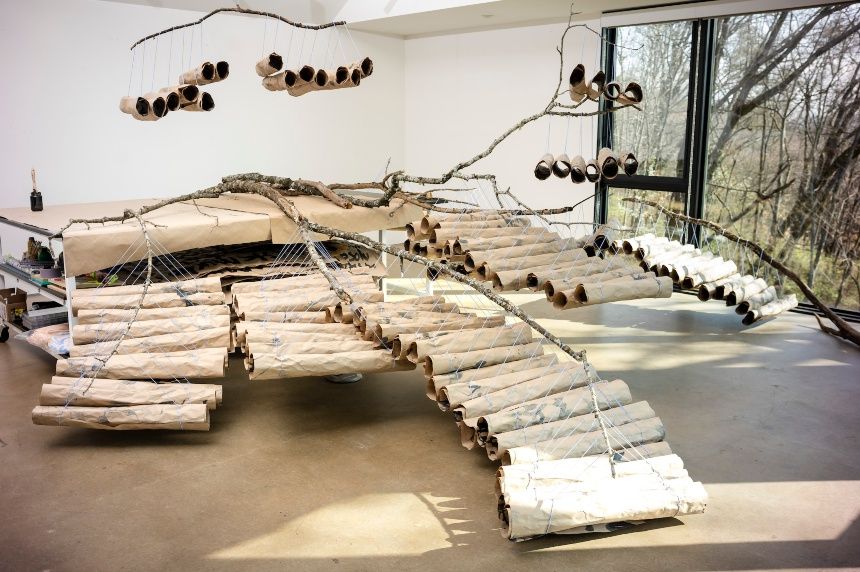
Tell us more about the secrets. Are they yours? Strangers? What is your definition of a secret?
Secrets can be anything that you have never said out loud. Because it is not supposed to be told. Because it makes you cry, or is difficult, or amazing. Nobody knows every single detail or experience that makes us who we are. So I was exploring how we could experience a sculptural reality of what we are made of, and think about how we occupy space. What would it be to enter a room that is so full with experiences, thoughts, in a way that you are sort of surrounded by what makes you. To have our silence installed in a room so we can see it out loud. When I write these stories from my past, they come back to me. It often makes me cry, that’s why the project name is Chillona, which means cry baby in spanish.
That is such a beautiful way of thinking about our interior monologues. What made you start this project and how did you begin?
It started with ‘what would it be to write things that you don't want anybody to read ever. I started writing these and then I made cords out of them. Many years later I told someone about the project and they asked: “are you telling me if I were to open one of these cords I can see your secrets?!” They couldn't believe it because I had a lot of cords! So I cut a piece of it, opened it and there was a story. I put it quickly back in my pocket after reading it, I was reminded it was never supposed to be read!
The project has been with me for a very long time, even before I started art school. But it had to develop in a way that would respect the secrecy. I had to find the right material for it, because the process to make the cords at the time required a large amount of threads and was very time consuming. I tend to work on several different projects and I chose to leave some of them dormant until I find the corresponding form, place and materials to make them happen. Chillona was the first project I decided to leave “dormant” and I was eager to work on it again.
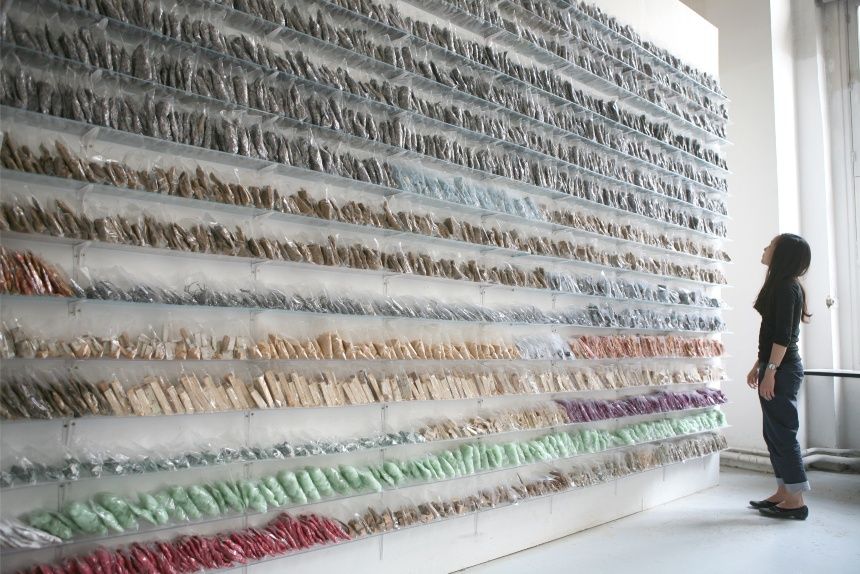
You are very prolific with how many works you make and have a wide and diverse range of projects. I’m curious how you would describe your practice?
I have been using the word prolific a lot lately. I find certain materials or they find me and I keep them for as long as possible while I’m working on something else. My creativity does have a prolific system of existence as I often work on four works simultaneously. They are all related to time and they all require time. I love being with the work and inside the work feeling enveloped by the process. We stay together until a sense of plenitude takes over and I am able to say goodbye to it, or share it with others.
Now, I’m working on more transformative projects that have different states of transformation where each state can be experienced as an artwork on its own. They don’t have to be presented together. They are states of becoming I examine with materials that were not supposed to give us so much. One example is kraft paper. I use kraft paper to write the stories for Chillona, the Secrets. And I use tissue paper for Dual which is an extremely fragile material. It’s not the wrapping of a gift, right? A milligram amount of color and sound that wasn’t supposed to be more than the first instance. I explore its existence adding to these materials a memory, a story through different transformations.
It has lived a life!
Exactly. It’s an object that is meant to disappear in a second and I explore the immensity of its existence by creating multiple formulas and approaches to transform the objects individually or through or collaborative and participative actions.
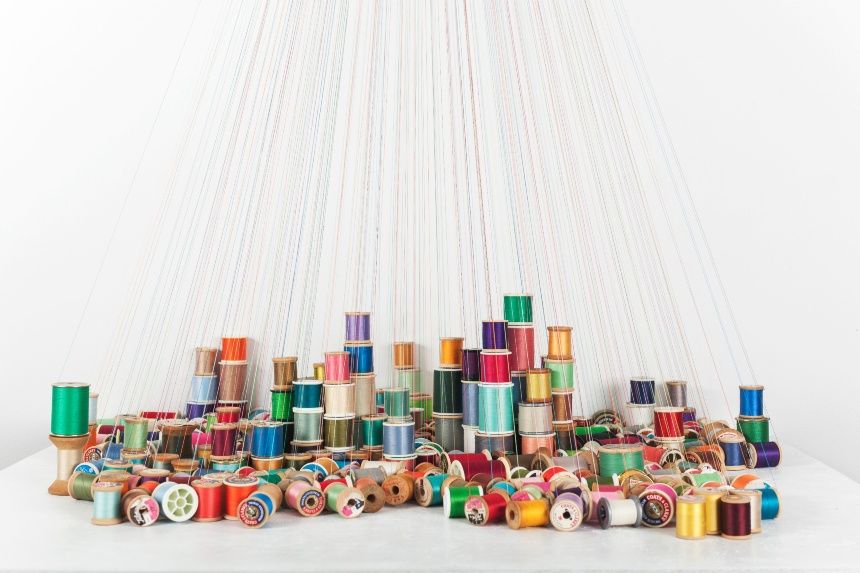
The public plays a large role in your work. How do you find the balance between a public engagement and the private inner stories and secrets?
Before the pandemic, I had a very community involved lifestyle for many years. I became an advocate for the city and people I was working with, which was beautiful. After the pandemic, we moved to a bigger city where I now spent 90% of time on my own, mostly in my studio and 10% of the time sharing and distributing my work.
I’ve traveled a lot in the past six months. I need time on my own to extract the experiences I’ve lived with people, being in different cities and different countries. I’m a studio person. I feel very centered in my studio because it’s the place where I can give form to everything I’ve received outside of this space. In the moment of sharing, it’s the same system, but it goes towards others. A large part of my work is based on exchanges with others, especially during collective actions, I share what art does to me. So I put their hands in the same place where mine were. It’s a state of mind that originates from a religious background. I grew up with lots of family members being very devout to catholicism and religion in general. I have this reminder to be thankful.
What do you do outside of making art?
I’ve had fantastic jobs in the past year and a half working for a publication here in Chicago. It’s a collective of writers, artists and poets. I translate into Spanish articles from their archives. I’m a very involved person, culturally speaking. I seek or create opportunities to participate in the culture of the places where I live. I am rekindling a relationship with a publication I founded named Ukayzine. The project was on hiatus for a few years. I am creating the content for the new season and looking for new curators to present the work of a selection of artists. It is a nomadic art magazine promoting international cultural exchange through visual arts.
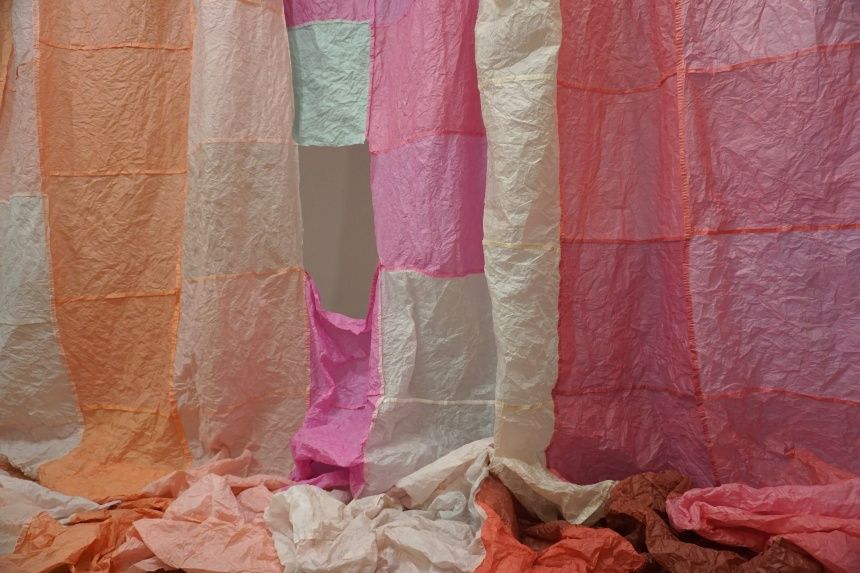
It’s great to see artists getting recognition for their work. We don’t work for recognition necessarily but it can be good to receive it.
An artist told me not too long ago that it is important to have in some way a community based recognition. It doesn’t have to be massive, just community based. In this conversation she was referring to our place of origin, but in my case, coming from France and Peru and living in the US for 10 years, has given me multiple places of origin. I find it rewarding to receive recognition for participating in the cultural landscape of places that made me and are at the core of my practice. It is enriching and it can also ignite a sentiment of volition to keep going when we feel that our makings are serving others.

I’m wondering what advice you would give to your younger self or a younger artist?
First, which is what I did, I didn’t start to study art until I felt that I was full enough that there was something to unravel. I didn’t do it on purpose, it wasn’t calculated. I think that’s the advice that I’ve been trying to give many artists who go to school too young. It is expected for success to happen because a person is younger, this system of aging that is meant to determine youth as a means & end for success. Do not hurry to invest time studying in art. Dive in, when your jar is full with the perfect amount of tears.
View more of Natalia's art on her website and Instagram.
